博文
主编引语:全面交通控制(No. 2)与社会交通(No. 3)
|||
IEEE Transactions on Intelligent Transportation Systems, Vol.15, No.2, pp457-462
Scanning the Issue and Beyond: ITS with Complete Traffic Control
ITS with Complete Traffic Control
In the past few years, I often chug through the Beijing metropolitan area at an average around 10 to 15 miles an hour, slower than in most of other major cities around the world. I still remember that one day in the Spring of 2012, it took me exact 2 hours to drive a distance that normally would need less than 20 minutes to complete, and I missed my appointment. While sitting in my car on congested roads or at crowd intersections, I often recalled a project I had for my 1999 class “SIE 658: Advanced Topics in Robotics and Automation”, it was about the total and complete traffic regulation for achieving zero fatality by automatic control of each individual vehicles using dual GPS in a transportation network. The project was called “Future Traffic Control without Traffic Lights”,a little futuristic before Google’s autonomous vehicles take over our roads.
Now I think we can achieve a “soft” version of such total and complete traffic control by integrating computer vision, cell phones, variable message systems (VMS), and new connected vehicular technology. In Tucson, Arizona, a city I have lived and worked for over 20 years, many automated speed camera systems have been installed among selected sites for the purpose of decreasing speeding violations and reducing collisions. However,I believe this technology, combined with VMS and in-vehicle warning or display devices, can be used to develop In Situ segment traffic controllers and regional traffic controllers: that is, in additional to safety consideration, using cameras to identify vehicles, their speeds and moving behaviors for the purpose of traffic control,monitoring and regulating by laws. In this way, we can plan and manage the speed of vehicles and their driving behaviors along a segment of a road or among a region of a road network, just like we can control the traffic flow at road intersections through traffic light controllers. Geometrically, this is a generalization of intersection traffic controllers as point control to camera-based segment or regional traffic controllers as line or area control.
The complete or total traffic control provides a realistic mechanism for rapid implementation of some new and exciting methods and techniques in communication and controlfor traffic management. Especially, the concept from the emerging new network technology, so called software-defined networking (SDN) , and the ACP-based parallel control and management of complex systems that I have introduced a decade ago. In SDN, network administrators are able to manage network services through abstraction or virtualization of lower level communication functionality by decoupling the system that makes decisions about where trafficis sent (the control plane) from the underlying systems that forward traffic to the selected destination (the data plane). As claimed by the Open Networking Foundation’s white paper, “Software-Defined Networking: The New Norm for Networks”, through such decoupling enterprises and carriers gain unprecedented programmability, automation, and network control, enabling them to build highly scalable, flexible networks that readily adapt to changing business needs. I believe the idea of complete traffic control provides the basis for the concept of Software-Defined Traffic Networking (SDTN), which is a direct implementation of Artificial Transportation Systems in my ACP approach. This combination might enabletraffic network users or customers obtain the similar benefits or even more as those offered by SDN for communication. As a matter of fact, SDN provides only part of the AC functionality, no steps in P are involved so far, which leads to a closed-loop network management for better performance, as described in the ACP parallel systems approach.
I believe this extension could make our traffic networks more effective, less pollution .
FEI-YUE WANG, Editor-in-Chief
IEEE Transactions on Intelligent Transportation Systems, Vol.15, No.3, pp909-914
Scanning the Issue and Beyond: Real-Time Social Transportation with Online Social Signals
Social Transportation
Overa decade ago, I introduced the term “social computing” as a new direction for computational social studies; two years ago, we published the first monograph on social computing; and today, I’m glad to say, social computing has emerged as a major research direction worldwide. NowI would like to coin another term—social transportation—to describe another emerging field of research, development, and application forintelligent transportation systems.
In my musings on the term, I wasn’t sure if there was already any research activity in this direction, so I did a cursory search in Google and found that journalists were already using the term in news reports. Specifically, I found two articles that cited “social transportation”, one titled “The Future of Social Transportation: Bandwagon Is Helping You Share Cab Rides”, a story about a ride-sharing app called Bandwagon for mass carpool in New York City (especially for trips to airports JFK and LaGuardia). Bandwagon aims through the app to coax the city’s taxi system into a future of “modular transportation”, making it“more social, more efficient, more like transit”, and facilitating a shift to thinking of the “car as part of a larger transportation network” in which“anyone can catch a cab-share at any time and from any corner”, with the ultimate aim of making our society “easier and less expensive to be carless.“And another: “Social Transportation for Seniors”, on “reconnecting senior residents of North Richland hills, Texas with the community by providing free transportation to leisure and social activities.” Both are related to my own thoughts, but I was surprised to find that stories and news about ridesharing app pioneer Uber did not use term “social transportation” before. Also, despite Uber- and Bandwagon-like apps mushrooming in China now,the term “social transportation” has not appeared there. As for academic research, no one has mentioned social transportation, at least according to Google and Baidu. By the way, I also searched term “social traffic”, and was surprised that the top items were about data traffic of social websites, nothing about real world traffic flows on the road!
However muted its Internet presence, social transportation has existed and developed without a name for quite a while. To me, traffic analysis and forecasting using data from mobile phones and social media are just the typical examples of social transportation research. Social transportation should emphasize real-time computing and embedded applications in transportation systems with on-line and interactive big data, this is how the field differentiates from works in the sociology of transportation, which are off-lineand usually historical. Social transportation has the potential to rapidly become an important and independent field of research in transportation, we can do this by focusing in five areas, 1) traffic or transportation analytics with big data and social signals using data mining, machine learning, and natural language processing methods; 2) crowdsourcing mechanisms for transportation based social media, social networking, and the Internet of Things (IoT) or even the Internet of Everything, especially the coming vehicles to vehicles, websites, people, infrastructures communication; 3) new services beyond location-based services (LBS), such as transportation knowledge automation, especially decision-based services (DBS) or task-based services (TBS) that collecting required information in real time for transportation decisions or tasks, and information or intelligence-based services (IBS) or knowledge-based services (KBS) that recommending agents or organizations who might find the identified intelligence or knowledge useful for solving traffic problems or improving the transportation performance; 4) web-based agent technology for transportation control and management, such as software robots or web surrogates for traffic monitoring, safe driving, vehicular heath and energy management, at this point, the effort should be directed in developing various smart apps that collect social traffic data and link people to traffic and cars in real time; 5) real applications and feedback for more research and development. This year I have graduated my first PhD candidate in social transportation, and I hope within the next few years we will dedicate more papers, special issues, books,and conferences in this important field.
More than 100 years ago, we started the march towards an Auto Society, and we have since become so successful that many nations, first in the US and now in China,have become “nations on wheels”. Today, we now face the consequences of this modern revolution – many large cities around the world experience traffic congestion and pollution, we need to fix these problems, and I hope the emerging field of SocialTransportationwillbe a big help in this effort.
FEI-YUE WANG, Editor-in-Chief
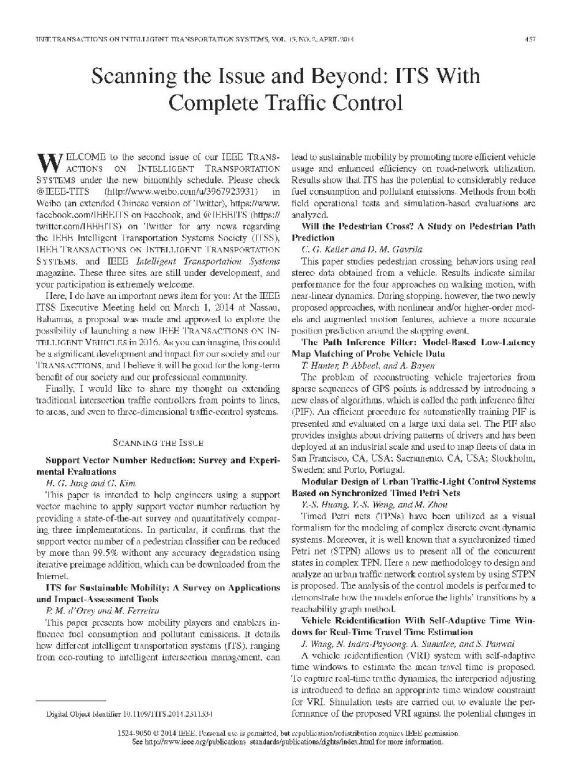
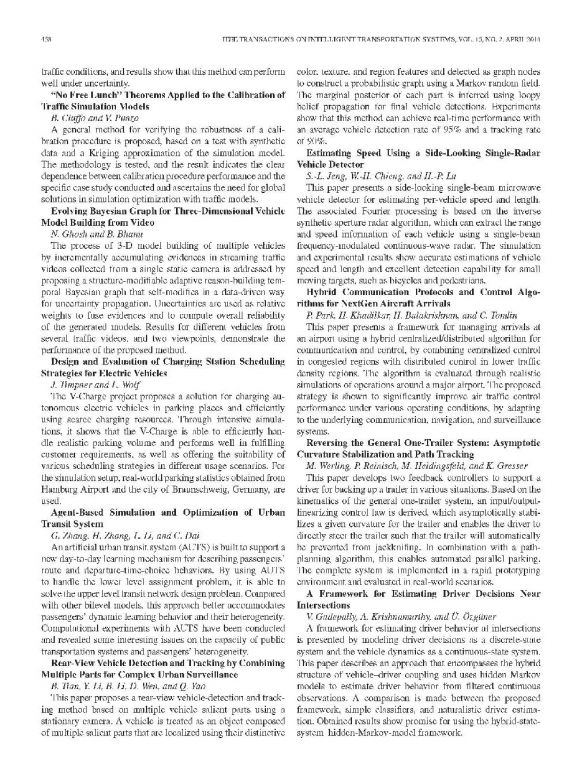
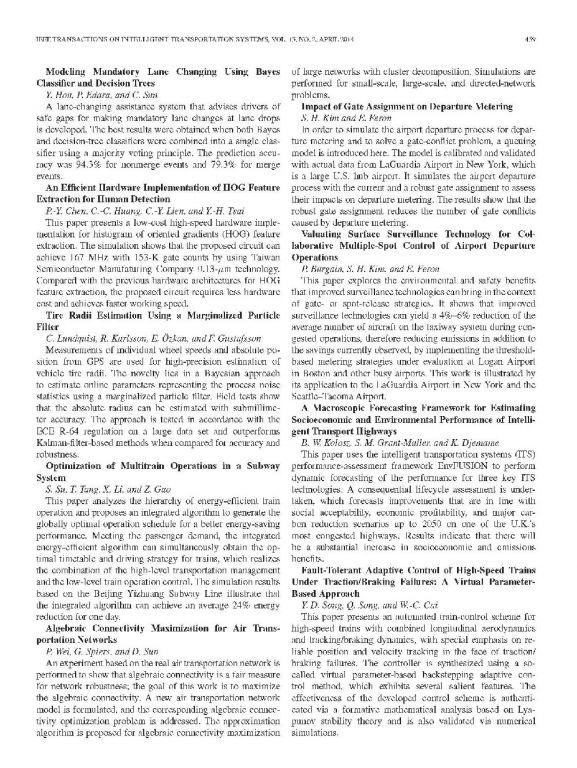
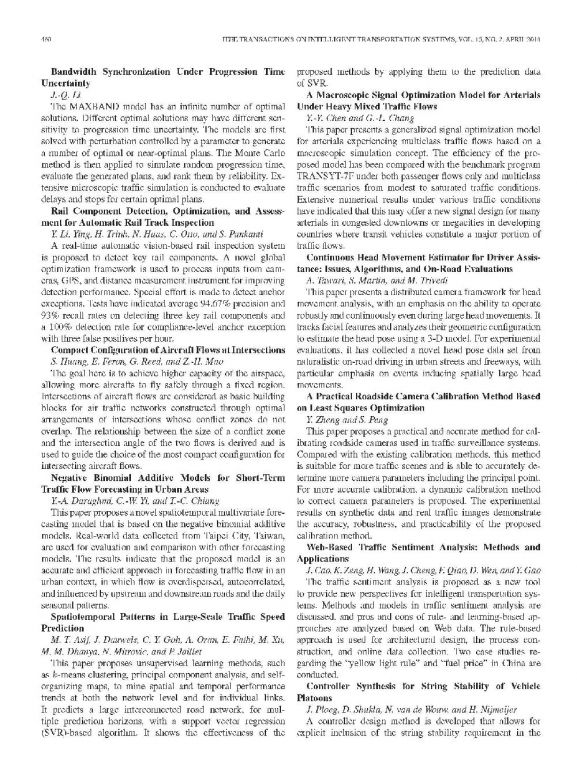
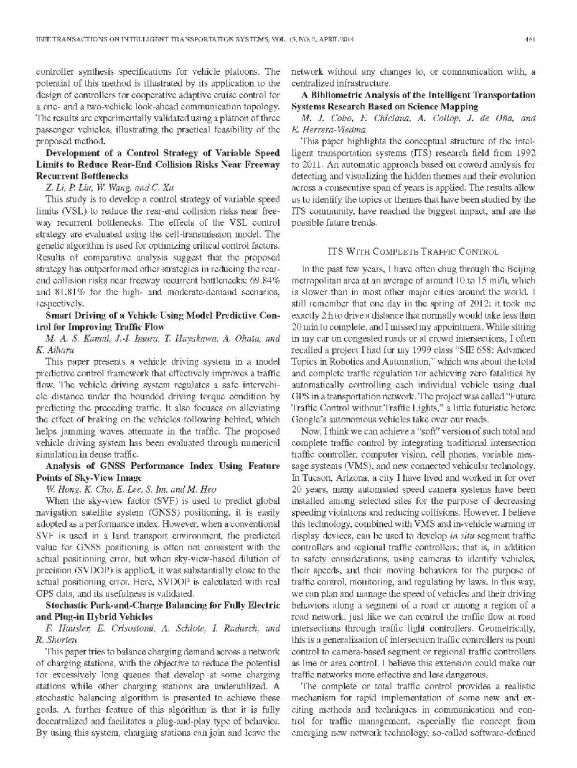

https://blog.sciencenet.cn/blog-2374-799520.html
上一篇:IEEE ITSC 2014 CALL FOR PAPERS
下一篇:关于大数据的问答